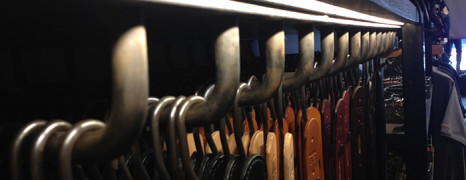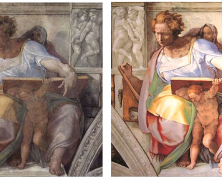Flexfire LEDs is proud to have been part of many successful LED display lighting projects. In a recent installation, our ColorBright LED strip lights were installed at a Tanner Goods retail store in Los Angeles, CA. Tanner Goods is a well-known producer of high quality leather goods and accessories that are crafted by hand in Portland, OR, using premium domestic materials. The management team at Tanner Goods found Flexfire LEDs when searching for a tasteful way to illuminate their products, which previously had been cast under shadow. They chose LED strip lights because of their low profile and relatively straightforward installation procedure. Attractive display lighting has been shown to play a critical role in bringing customers into a store and encouraging them to make a purchase. A study published by the International Journal of Engineering Science and Innovative Technology showed that 85% of customers sampled felt that attractive colors and lighting increased the likelihood that they would want to spend more time in a store. Respondents said that effective lighting in particular helped them to “select the right products, reduce the time wasted and to feel relaxed” during their shopping experience. Tanner Goods’ choice of warm white LED lighting brings out the rich orange, red and brown hues found in their leather product selection. Such high quality light also creates a more inviting atmosphere for customers entering the store, allowing them to relax and take their time while browsing or looking for a particular product. “Using LEDs to illuminate our shelving allowed us to highlight our products in an effective and subtle way,” said Tanner Goods store manager Alex Toyoshima. “The Flexfire LEDs team has also provided great customer service and was quick to help whenever we were in need.” Here are a few photos from the installation: We truly enjoy the opportunity to provide clients with the LED solutions they need. It’s really a great pleasure for us to see our strip lights installed in the countless innovative and sustainable projects that are developed with our lights every single day. Your vision is what inspires us to do what we do! Do you need any help deciding which LED strip lights are right for your commercial, industrial, or home renovation project? Give us a call at 1-844-FLEXFIRE (1-844-353-9347) or shoot us an email to info@flexfireleds.com and we’d love to get...
Sistine Chapel LEDs: A Masterpiece Of Fine Art Lighting...
posted by Flexfire LEDs
The Sistine Chapel ceiling frescoes are the world’s most recognized works of art by High Renaissance artist Michelangelo. Epic in scope, the frescoes, which depict scenes from the Book of Genesis, have been described as “an artistic vision without precedent,” and “a veritable beacon to our art, of inestimable benefit to all painters, restoring light to a world that for centuries had been plunged into darkness.” While Michelangelo’s works may have lit the way for untold numbers of artists who followed, until recently, inefficient, lifeless, and heat-generating halogen lamps were being used to light his masterpiece. Recognizing the potential for improvement, multinational lighting manufacturer Osram teamed with universities and private institutes to install a new LED lighting system for the Vatican masterpiece. The EU and private funders helped fund the installation, which was designed to address the shortcomings of the previous lighting system Installed in the 1980s, the original halogen lamps failed to highlight the full scope of colors used in the piece, while converting only 10% of the energy used into light (the other 90% was lost to heat generation). Combined with this high heat output, an increasing number of yearly visitors meant rising temperature concerns, which could potentially damage the work itself. For this new installation, 7,000 low-heat LEDs were specially adjusted to create the most natural, homogenous fine art lighting possible. The hue of each LED was individually adjusted until the results were precisely matched to the color pigments used 500 years ago by Michelangelo in the different sections of the massive work of art. According to Mourad Boulouednine, Osram’s regional head of projects, the Renaissance pigments required a different color rendering index than the ones made available the eight standard testing colors. After performing an optimization process by analyzing light coming from a particular spot on the piece, the...







